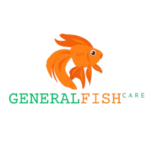Starting Your First Aquarium: Everything You Need to Know (Part 2)
We are super excited to bring you Part 2 of the beginner’s guide to the aquarium hobby. In this blog, we are going to look at everything you need to start your aquarium fish-keeping hobby. For new fish keepers, it can be confusing. What do you need to begin a fish tank?
With 21 years of fish-keeping experience and extensive knowledge in aquaculture and fish health, I hope to make this process easier for you. Hopefully, all these things will help make this process a little bit easier for you.
Thing Number One: You Need a Fish Tank
There are lots of methods to go about this.
In part one of this beginner series, we discussed some of the best tank sizes, but the first thing you’ll need is the tank itself. We also emphasized the importance of researching the types of fish you want before purchasing a tank, as this will determine the tank size.
- Aquarium Hobby (Part 1)
- Guide to Guppy Care and Breeding
- Ultimate Guide to Congo Tetra Care
- Harlequin Rasbora Care
- Fish Tank Lighting and Fish Behavior
Helpful Resources
- [Tank Sizes – Pros & Cons]
- [Stocking Options for Different Tank Sizes]
Fish Tank Light
It’s exciting to have fish, but not so great when you can’t see them. Check out our guide on Fish Tank Lighting 101 for more details.
One of my favorite lights for beginners is the Hyger Light, which is affordable and enhances fish colors. You can find my recommended beginner-friendly lights, like the Hyger Light, linked in the article.
Heater
Now, here’s where things get tricky.
- If your tank is 10 gallons or larger, I recommend Eheim heaters for their reliability.
- Heaters are essential for tropical fish, but if you’re keeping goldfish or cold-water fish, a heater might not be necessary.
Heater Sizing Guide
Tank Size (Gallons) | Recommended Heater Wattage |
10 Gallons | 30-50 Watts |
20 Gallons | 50-75 Watts |
30 Gallons | 75-100 Watts |

Filter
A filter is crucial for maintaining a healthy tank environment.
For beginners, I highly recommend a hang-on-back (HOB) filter. These sit on the back of the tank, are easy to maintain, and are cost-effective.
Recommended Filters
- For 10 gallons or less: Aqua Top Forza 5-15
- For larger tanks: Marineland Pro Series or Seachem Tidal Line
Lid for Your Tank
A tank lid prevents fish from jumping out and reduces water evaporation. Even fish that aren’t known for jumping can end up on the floor.
Thermometer
Do not rely on the heater alone to monitor water temperature.
Types of thermometers:
- Stick-on glass thermometers (less accurate)
- Floating or suction-cup thermometers (more reliable)

Fish Tank Stand
For tanks 20 gallons or larger, I highly recommend a sturdy fish tank stand.
- Tanks weigh approximately 10 lbs per gallon when filled.
- Even for 5-10 gallon tanks, a stand may be necessary.
Essential Accessories
Fish Net
- Choose a size suitable for your fish.
- Consider a larger net if you plan to keep fish that will grow over time.
Fish Food
- We feed N Fin fish foods, available via Flip Aquatics.
- Investing in high-quality food helps keep fish healthy.
Tank Background
- A background improves the visual appeal of your aquarium.
- Store-bought backgrounds are available, or you can paint one
Power Strip
Most wall outlets only accommodate two plugs, while a tank setup requires more. A power strip with a built-in breaker is essential.

Water Quality and Maintenance
Water Conditioner
- Removes chlorine and chloramines from tap water.
- We use Fritz Aquatics water conditioners.
Cycling Your Tank
- Fish produce ammonia, which is toxic.
- Ammonia is converted to nitrite (also toxic), and finally to nitrate.
- Use Fritz Zyme 7 (contains live nitrifying bacteria) to establish a healthy nitrogen cycle.
Cleaning Tools
- Algae scraper (magnetic or manual)
- 5-gallon bucket for water changes
- Gravel vacuum (preferably one with a bulb for easy suction)
- Python water-changing system for tanks over 29 gallons (connects to sink)
Testing Water Parameters
Testing your water regularly ensures a healthy environment for your fish.
- Test strips: are an easy way to monitor water quality. Simply dip them in water and compare the results to the provided color chart.
- Parameters to monitor: Ammonia, Nitrite, Nitrate, Hardness, pH.
Decorating Your Tank
Substrate Options
- Gravel (easier for beginners)
- Sand (more natural look but requires special maintenance)
Decorations
- Caves, driftwood, and artificial structures provide shelter.
- Plastic plants are ideal for beginners, but live plants can be added later.
Adding Fish
Key Advice for Beginners
- Start slow – Add only one or two fish at first.
- Use Fritz Zyme 7 to prevent ammonia spikes.
- Research fish requirements to ensure compatibility.
What’s Next?
In Part 3, we’ll guide you through setting up your tank step by step using all the necessary supplies described here. If you haven’t read Part 1, I recommend you read it!


